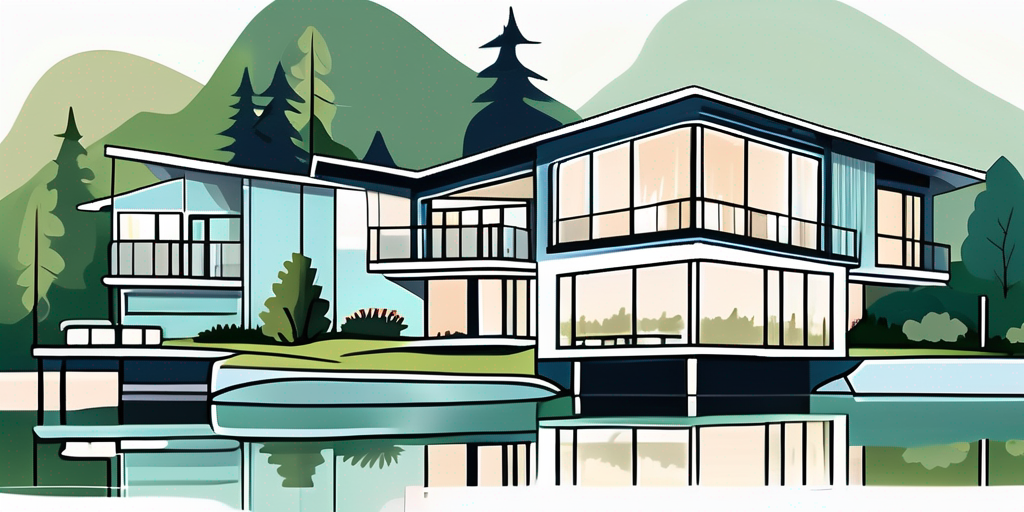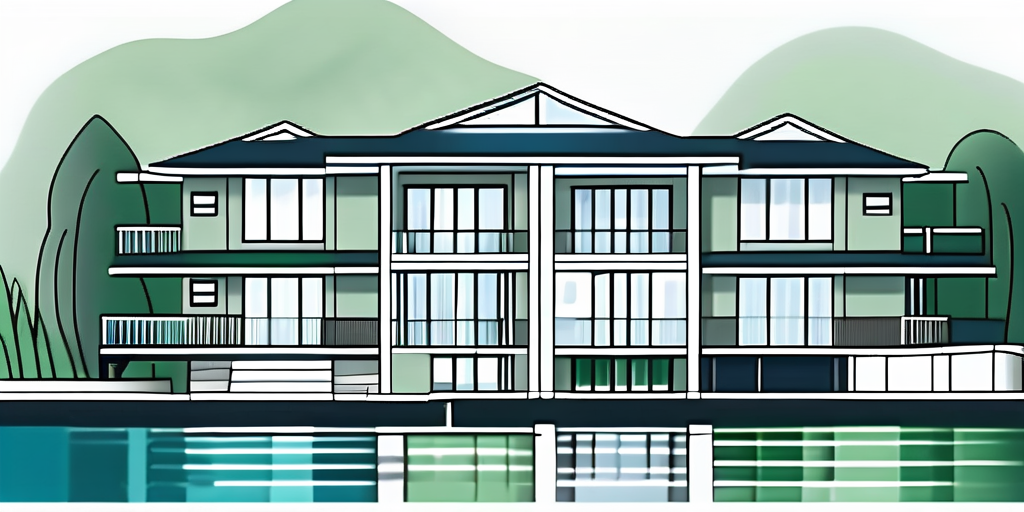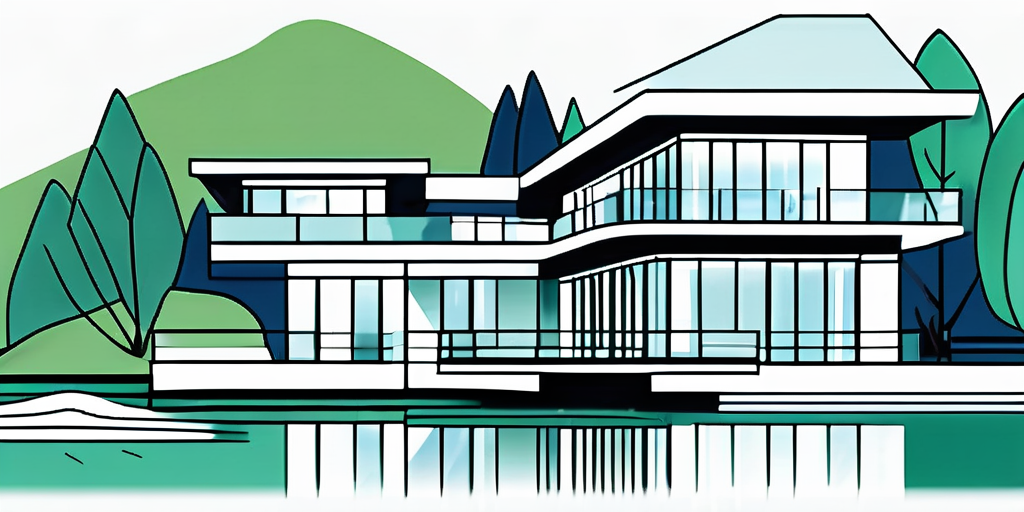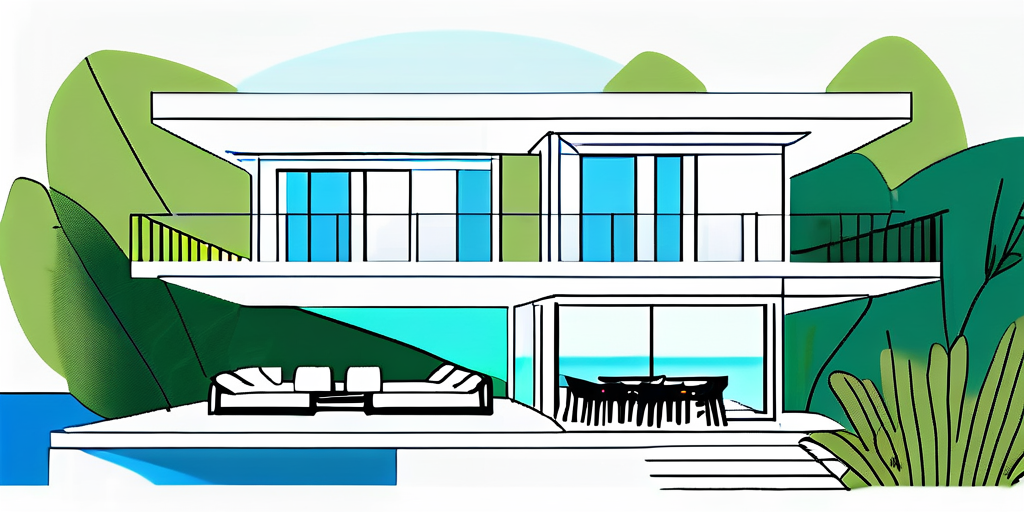
Are you dreaming of waking up to serene lake views, with the gentle sound of water lapping against the shore? Multi-story lakefront homes offer not only breathtaking vistas but also the versatility and space that many families crave. In this guide, we’ll explore the ins and outs of living in a multi-story lakefront home, diving deep into everything from planning to design, and how to make the most of your outdoor space.
Multi-story living can be an appealing choice for homeowners who want more than just a single-level abode. There's something unique about ascending to different levels, with each floor serving its own purpose and flair. From cozy family quarters to spacious entertainment areas, multi-story homes can feel dynamic and engaging. But what makes them so desirable?

First and foremost, the appeal of multi-story homes lies in their ability to maximize a property’s potential. With limited land space, building upwards is a smart way to utilize available square footage. Imagine having a panoramic view of the lake from an upper-level balcony or master suite—this enhances the living experience immeasurably.
Additionally, multi-story homes often inspire a unique sense of separation between different areas. For example, children can enjoy their own playroom or bedrooms upstairs while the main floor remains a hub for family gatherings. This sense of privacy can be a welcomed feature for families of all sizes. Furthermore, the vertical layout encourages a more active lifestyle, as residents find themselves using stairs regularly, which can contribute to overall health and fitness.
Multi-story lakefront homes are designed with a variety of features that set them apart. High ceilings and expansive windows often grace these homes, allowing natural light to flood the interiors. Open-concept living areas provide a fluid transition between spaces, perfect for entertaining guests.
Moreover, these homes can often incorporate outdoor spaces on multiple levels, including balconies and terraces that offer fantastic spots for relaxation and enjoyment of the beautiful surroundings. Whether you're sipping coffee with the sunrise or hosting a barbecue at dusk, multi-story homes cater to a lifestyle of leisure and enjoyment. Additionally, the architectural designs of these homes can vary widely, from modern minimalist aesthetics to rustic charm, allowing homeowners to express their personal style while enjoying the benefits of multi-level living.
Another key feature is the potential for versatile layouts. Homeowners can customize their spaces to suit their needs, whether that means creating a home office on the lower level, a guest suite on the upper floor, or even a dedicated gym area. This adaptability not only enhances the functionality of the home but also allows families to grow and change without the need to relocate. As lifestyles evolve, the multi-story design can accommodate new requirements, making it a long-term investment in comfort and convenience.
When it comes to planning your dream lakefront multi-story home, several critical considerations can help ensure your vision comes to life. From location to design elements, every detail matters. Here’s what you need to consider.
The location of your lakefront home can make all the difference. You'll want to choose a spot that not only meets your aesthetic desires but also considers practical aspects such as accessibility and proximity to amenities. Think about how close you want to be to grocery stores, schools, and recreational activities.
Additionally, consider the direction your home will face. A south-facing home can capture more sunlight throughout the day, while a north-facing location might offer stunning sunset views. Each orientation brings its own advantages, so weigh your options carefully. It's also worth researching the local climate and weather patterns, as these can influence your home's design and materials. For instance, if your chosen location experiences heavy snowfall, you may need to consider a sloped roof to prevent snow accumulation.
One of the most appealing aspects of a lakefront home is the view. Therefore, when designing your multi-story abode, make the most of those picturesque scenes. Large, strategically-placed windows are essential for inviting the beauty of nature into your home. Think about implementing sliding glass doors that open onto balconies or decks, creating seamless transitions between indoors and outdoors.
Moreover, incorporating outdoor living spaces on various levels can maximize your enjoyment of the view. Imagine hosting friends for dinner on a deck that overlooks the lake—it’s the ultimate multi-story lifestyle! Don't forget to consider shades or awnings to control light and heat, ensuring comfort year-round. You might also explore the idea of a rooftop terrace, providing an elevated vantage point to enjoy panoramic views of the water and surrounding landscape. This space can serve as a perfect spot for stargazing at night or soaking up the sun during the day, enhancing your connection to the natural beauty around you.
In addition to aesthetics, think about the materials you choose for both the exterior and interior of your home. Natural materials like stone and wood can create a harmonious blend with the environment, while also providing durability against the elements. Consider how these materials can be used to create a warm and inviting atmosphere inside, complementing the breathtaking views outside. Integrating eco-friendly and sustainable building practices can also be a vital aspect of your design, allowing you to enjoy your lakefront retreat while minimizing your environmental footprint.
Just like any other home, lakefront multi-story houses come in an array of architectural styles. Whether you're a fan of modern design or prefer a more traditional look, there is a style that can fit your dream image perfectly.

Modern lakefront homes are all about sleek lines, minimalism, and an emphasis on blending in with the surrounding nature. High ceilings, open spaces, and large windows are staples of modern design, making these homes look effortlessly stylish. Materials like glass, steel, and concrete are often used to create a contemporary feel that complements the natural environment.
These homes may also feature innovative technologies, like energy-efficient systems and smart home integrations, making living more convenient and sustainable. If you're a tech-savvy individual, a modern lakefront home could be the perfect choice for you.
Furthermore, modern lakefront homes often incorporate outdoor living spaces that extend the home’s footprint into nature. Expansive decks, infinity pools, and outdoor kitchens create seamless transitions between indoor and outdoor environments, allowing residents to fully embrace the beauty of lakeside living. The use of sustainable landscaping, featuring native plants and eco-friendly materials, enhances the overall aesthetic while minimizing environmental impact, making these homes not just stylish but also responsible.
On the other hand, traditional lakefront homes evoke a sense of warmth and nostalgia. Often crafted with wood, stone, and charming architectural details, these homes invite guests with a cozy feel. Gabled roofs, natural wood finishes, and intricate porches are hallmarks of traditional style, creating an inviting atmosphere.
These homes often feature classic design elements like built-in bookcases and fireplaces, which can provide a great space for family gatherings all year round. If you love the thought of a home that tells a story and offers a feeling of belonging, traditional lakefront homes can be quite appealing.
Additionally, traditional lakefront homes frequently include expansive front porches, perfect for sipping morning coffee while soaking in the serene views of the water. Many of these homes also boast charming details such as window boxes filled with colorful flowers or hand-crafted shutters that add character and charm. The layout often encourages family interaction, with open living spaces that flow into dining areas, making it ideal for entertaining friends and loved ones while enjoying the picturesque backdrop of the lake.
While multiple levels can enhance your living experience, thoughtful planning is crucial to address some practical considerations that come into play.
When designing your multi-story lakefront home, consider accessibility for all household members. While stairs can provide a great workout, ensuring that everyone feels welcome in every area of the house is essential.
If your household includes children, elderly family members, or guests with mobility issues, you may want to think about incorporating features like an elevator or ramps that allow ease of movement between floors. This will keep your home functional and comfortable for all. Additionally, wide hallways and doorways can facilitate easier navigation for those using mobility aids, such as walkers or wheelchairs. Thoughtful placement of furniture can also create clear pathways, reducing the risk of accidents and ensuring that everyone can enjoy the beauty of your home without barriers.
Another aspect to consider with multi-story living is the upkeep of your home. The more levels you have, the more maintenance will be required—especially when it comes to exterior spaces like balconies and roofs.
Set a routine for maintaining gutters, checking windows, and ensuring decks are safe for use. It might also be beneficial to establish a cleaning schedule that keeps those upper-level areas tidy. A little proactive care can go a long way in preserving the beauty and longevity of your lakefront home. Furthermore, consider the materials used in your construction and finishes; opting for weather-resistant and low-maintenance options can significantly reduce the amount of upkeep needed. For instance, composite decking can withstand the elements better than traditional wood, saving you time and effort in the long run. Regular inspections can also help catch potential issues early, preventing costly repairs down the line and ensuring that your multi-story home remains a serene retreat for years to come.
Outdoor spaces are essential to lakefront living, and in multi-story homes, you have the opportunity to get creative with how you utilize these areas. Let’s break down how to maximize your outdoor enjoyment.

Balconies and decks can serve as your personal retreats, offering stunning views and fresh air. When designing these spaces, consider adding comfortable seating, planters with vibrant flowers, or even an outdoor kitchen for summer barbecues.
It's also a great idea to include features like retractable awnings or pergolas that provide shade, making your outdoor spaces usable in various weather conditions. Ultimately, the goal is to create an inviting environment where you can relax and soak in the beauty of your lakefront surroundings.
Additionally, incorporating outdoor lighting can enhance the ambiance during the evening hours, allowing you to enjoy your space long after the sun sets. String lights, lanterns, or even built-in LED fixtures can create a magical atmosphere, perfect for hosting gatherings or enjoying a quiet night under the stars. Consider adding a small fire pit to your deck or balcony, which not only provides warmth but also serves as a focal point for socializing, making your outdoor area a year-round destination.
The landscaping surrounding your multi-story home is just as important as the home itself. Choose native plants that thrive in your region and require less maintenance, helping to preserve the natural beauty of the area. Consider installing pathways that guide guests from the house to the water's edge, enhancing walkability and flow.
Incorporating gardens, fire pits, and seating areas can turn your yard into an extension of your home, creating spaces for entertaining or quiet reflection. Thoughtful landscaping design invites residents and guests alike to connect with the outdoors and enjoy everything that lakefront living has to offer.
Moreover, integrating water features such as small ponds, fountains, or even a cascading waterfall can add a soothing element to your outdoor space. The sound of flowing water not only enhances the tranquility of your environment but also attracts local wildlife, enriching your connection to nature. Creating designated zones for activities like gardening or birdwatching can further personalize your outdoor experience, allowing you to engage with your surroundings in a meaningful way.